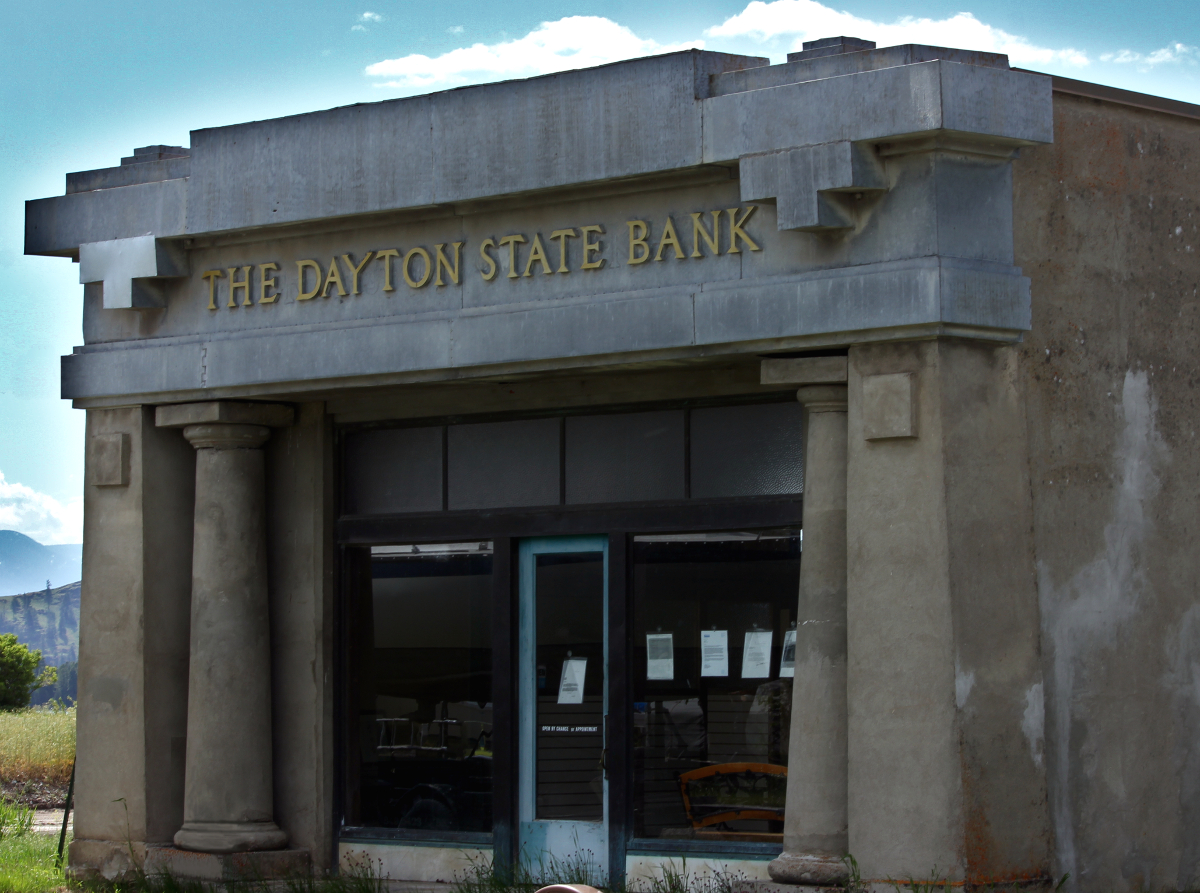Dayton was once a bustling town along the shore of Flathead Lake. Nowadays, hardly anything remains from its “hey-day” era – except the quite out-of-place Dayton State Bank.
The Dayton Banking Company was organized on May 2, 1910. The Dayton State Bank was built in 1912, along C Street, the once main thoroughfare in Dayton. The bank was well situated, as money was made and handled by the newly established ranching and agricultural operations in the area; the long-gone Dayton Hotel, the Dayton Mercantile, the Sykes Brothers general store, a blacksmith and other enterprises that once lined the streets of Dayton. The historic Somers Lumber Company dock and the railroad tracks used for dropping logs into Flathead Lake surrounded the bank, providing convenience for the workers and the roughly 300 residents of Dayton as well.
While its location was ideal, the history of the bank has been rather complicated. On the one hand, after the Flathead Indian Reservation was opened to settlement by non-natives in 1910, the Dayton State Bank was heralded as a testament of “progress.” On the other hand, the bank represented the epitome of the settler’s greed and their love of money and its spoils. Thus, the bank was both a monument of settlers’ progress – and tombstone of the Native American way of life.
The bank has stood for more than a century, but operated as a financial institution for only 21 years. Clifford B. Harris (a president of the Kalispell National Bank and the First National Bank of Polson) revealed the plans for the Dayton State Bank on July 4, 1912. However, just weeks after construction began, the bank was sold to F.A. Hacker and H.F. Dwelle. And within months, the bank was sold again to W.N. Noffsinger, who managed the Somers Lumber Company and founded the Somers State Bank.
During the drought years of 1920-26, more than 200 banks closed throughout Montana, but the Dayton State Bank survived. The bank also persevered through the Great Depression, but the owners wanted to close it. There was hardly a precedent for closing a solvent bank at the time, which complicated matters.
After the bank officially closed, an earthquake in the 1930s caused a significant crack in the wall and ceiling. Yet despite all the troubles of its past, most of the original architecture remains in tact. And fortunately, the bank was listed on the National Historic Register in 2012 (thanks to rehabilitation by its current owner, Jim Lekander). Remarkably, the Dayton State Bank is the only remaining example of original Egyptian-Revival style in Montana, as all others have been drastically altered since.
The adoption of the Egyptian-Revival style for a bank façade should not seem peculiar. In fact, there are many associations concerning money, mysticism, and patriotism in some form or another. For example, the “Eye of Providence” atop an Egyptian pyramid with 13 steps (each step representing the 13 original American colonies) appears on the reverse side of a dollar bill.
The bank is also unique because it is a rendering of the Egyptian-Revival style that seems muted by Craftsman-style sensibilities. So indeed, the concrete and tin front is unique in its own right – and unique for remaining “as is” since it was built more than a century ago.
While decades have past since the bank served customers, the Dayton State Bank still serves as a reminder of a nearly forgotten chapter in Flathead Valley history.
Jaix Chaix is a writer who appreciates history and architecture. You can share ideas and historical facts with him at [email protected] or at facebook.com/flatheadvalleylandmarks. He is also the author of “Death in the Valley: Odd Tragedies in the Flathead Valley, Montana 1887-1917” available at DeathInTheValley.com.
